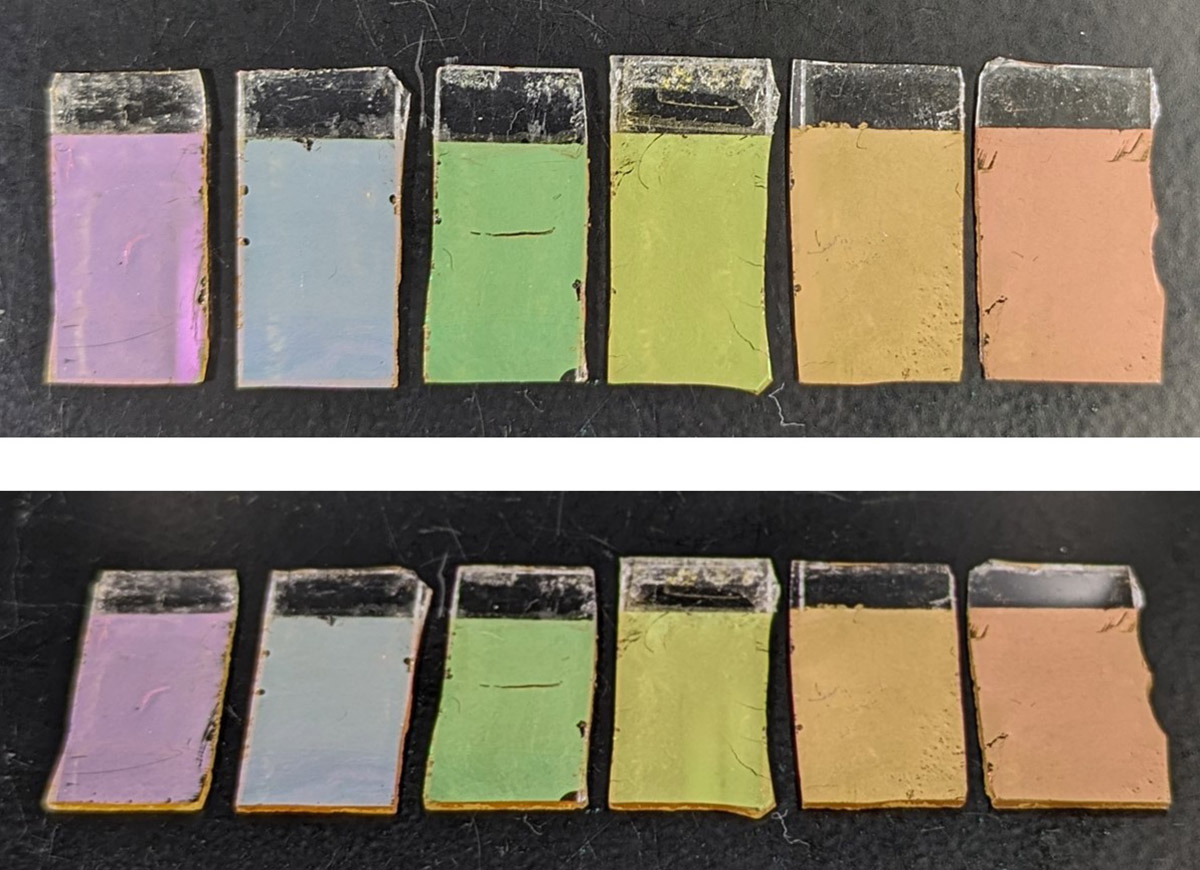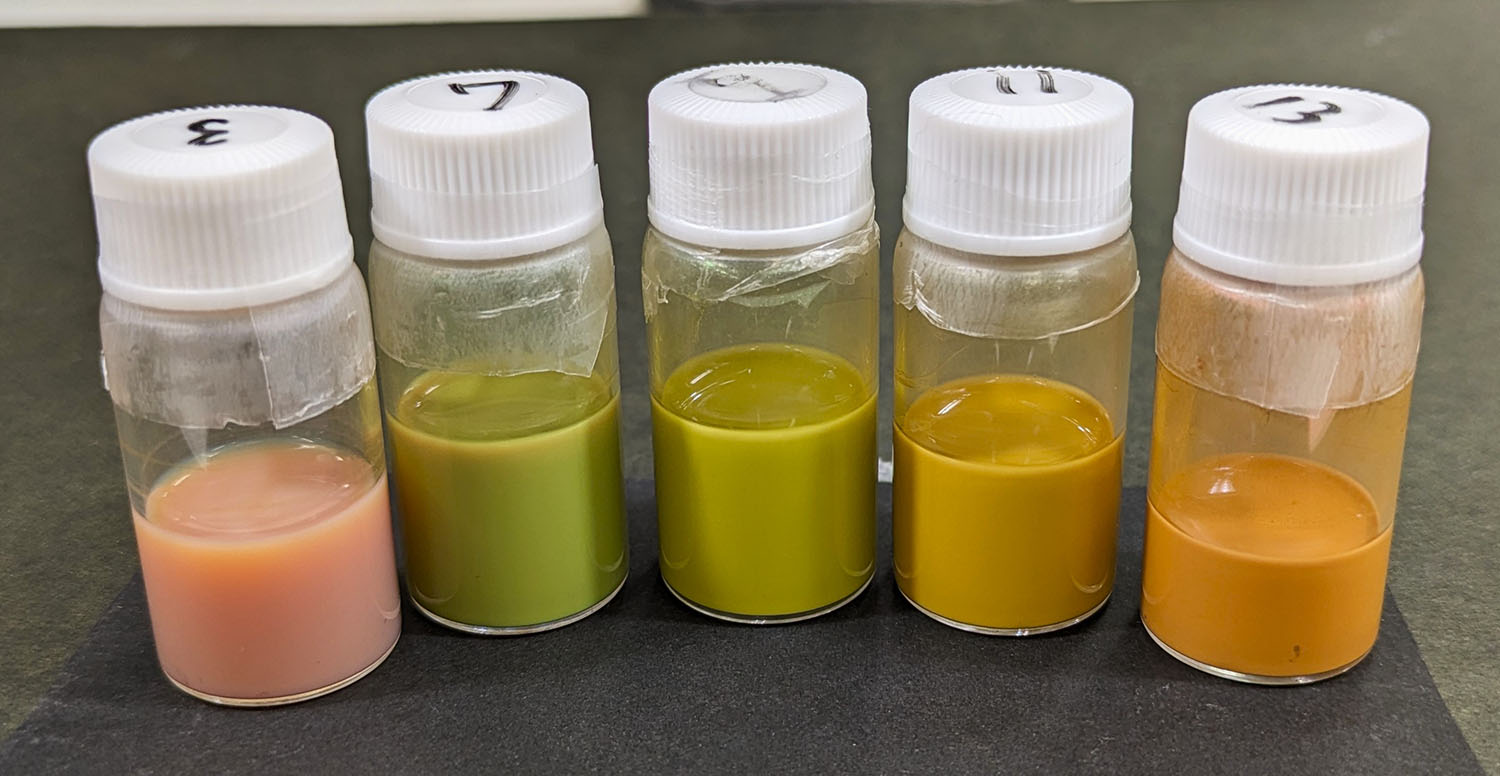Nanoparticle Paint Has Potential to Save Weight, Money

Non-fading structural colors promise a low environmental impact
A pair of Japanese researchers are taking lightweighting to new heights. Their new way of creating color by using nanotechnology has the potential to reduce the weight of paint and coatings used on aircraft, for instance, by some 90 percent. This nanoparticle paint could save billions of dollars and tons of carbon dioxide (CO2) emissions.
Kobe University material engineers Fujii Minoru and Sugimoto Hiroshi have been developing an entirely new approach to producing colors. Their technology involves the scattering of light of specific wavelengths around tiny, almost perfectly round silicon crystals.
Structural Colors That Do Not Depend On Viewing Angle

The nanospheres in a methanol suspension have different colors than when applied to a surface as a monolayer. The Kobe University researchers explain, “This is due to the multiple scattering, i.e., blue light subsides during consecutive scattering by absorption, while red light survives.” Photo by Fujii Minoru, Kobe University
This enables non-fading structural colors that do not depend on the viewing angle and can be printed. The material has a low environmental and biological impact and can be applied extremely thinly, promising significant weight improvements over conventional paints.

Prof. Fujii Minoru
An object has color when light of a specific wavelength is reflected. “With traditional pigments,” they explain, “this happens by molecules absorbing other colors from white light, but over time this interaction makes the molecules degrade and the color fades.”
On the other hand, structural colors typically arise when light is reflected from parallel nanostructures set apart at just the right distance so that only light of certain wavelengths will survive while others are canceled out, reflecting only the color we see.
Overcoming Challenges Related to Nanostructures
They note that one can see this phenomenon can be seen in the wings of butterflies or the feathers of peacocks and has the advantage that the colors don’t degrade. However, from an industrial point of view, one cannot easily paint or print neatly arranged nanostructures. Additionally, the color depends on the viewing angle, making the material iridescent.
Minoru and Hiroshi have been working for years on developing a new way to produce colors.
Years of Nanoparticle Research and Testing
“In previous work since 2020,” they said, “we were the first to achieve precise particle size control and develop colloidal suspensions of spherical and crystalline silicon nanoparticles. These single silicon nanoparticles scatter light in bright colors by the phenomenon of Mie resonance, which allows us to develop structural color inks.”
With Mie resonance, spherical particles of a size comparable to the wavelength of light reflect specific wavelengths particularly strongly. This means that the color that mainly comes back from the suspension can be controlled simply by varying the size of the particles.
The journal ACS Applied Nano Materials recently published a summary of their work. In it, they describe how the suspension can be applied to surfaces and will thus coat the underlying material in a form of structural color that does not depend on the viewing angle. This is because the color is not produced by the interaction of light reflected from neighboring structures as with “traditional” structural colors, but by its highly efficient scattering around individual nanospheres.
A New Dimension of Lightweighting

Associate Prof. Hiroshi Sugimoto
Sugimoto added: “A single layer of sparsely distributed silicon nanoparticles with a thickness of only 100-200 nanometers shows bright colors but weighs less than half a gram per square meter. This makes our silicon nanospheres one of the lightest color coats in the world.”
Using computational simulations, they determined that, contrary to intuition, the reflectance was highest when the individual particles were separated instead of when tightly packed. The authors explain: “This high reflectance despite small coverage of the surface by the nanospheres is due to the very large scattering efficiency. The requirement of a very small amount of silicon crystals for coloration is an advantage in the application as a color pigment.”
They acknowledge that they need to further develop and refine their work, but they do see potential valuable applications of their technology.
“We can apply it to the coating of, for example, airplanes,” Sugimoto said. “The pigments and coatings on an airplane have a weight of several hundreds of kilograms. If we use our nanosphere-based ink, we might be able to reduce the weight to less than 10 percent of that.” And every ounce saved on an airplane, of course, helps to translate into fuel savings.
